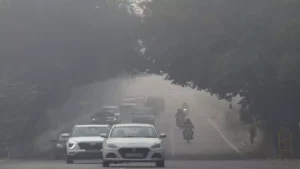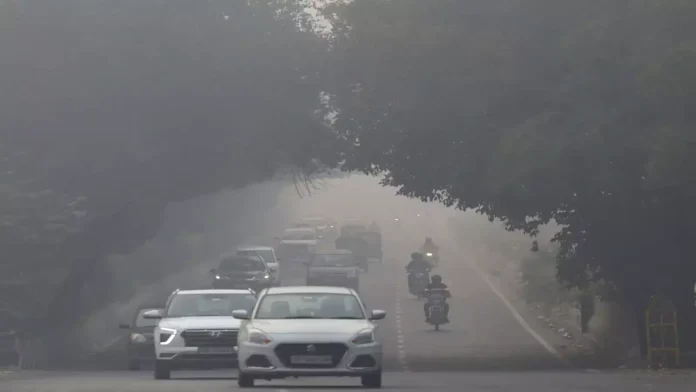Delhi Struggles with Hazardous Smog as GRAP-4 Measures Fall Short
Delhi Air Quality Deteriorates to Hazardous Levels Despite GRAP-4 Measures
Delhi’s air quality plunged to hazardous levels on Monday as a dense blanket of toxic smog engulfed the city, pushing Air Quality Index (AQI) readings to alarming highs. Some areas witnessed AQI levels exceeding 1,500, despite the enforcement of Stage 4 of the Graded Response Action Plan (GRAP), a measure designed to curb pollution in the region.
Authorities responded by shifting classes for students up to grade 9 online, while grades 10 and 12 continued with physical attendance. By evening, AQI levels across monitoring stations, including Anand Vihar, Vivek Vihar, and Chandni Chowk, surpassed the “severe plus” category, reaching the upper limit of 500. According to the Central Pollution Control Board (CPCB), this hazardous air quality poses severe risks to public health, exacerbating respiratory ailments, eye irritation, and fatigue.

Scenes of Delhi captured the grim reality of the smog crisis. Commuters on NH 24 near Akshardham Temple navigated through thick fog-like conditions, while monks and police personnel wore masks to mitigate exposure. Public spaces, including playgrounds, remained deserted as residents avoided outdoor activities due to health concerns. The toxic air also hampered workplace productivity, further intensifying the city’s challenges.
To combat the escalating pollution, authorities implemented stricter measures, including restrictions on trucks and banning BS-III petrol and BS-IV diesel vehicles across Delhi-NCR. Public transport promotion and dust suppression techniques, such as water sprinkling on roads, were observed near key landmarks like India Gate.
However, despite these interventions, Delhi’s AQI remained alarmingly high, peaking at 1,743 by 12:30 PM on Monday—far beyond the “hazardous” threshold of 300. For comparison, AQI levels below 101 are considered safe.
The worsening air quality has reignited calls for sustainable and long-term solutions to address Delhi’s annual pollution crisis. Residents urge stronger policy enforcement, cleaner energy alternatives, and collective action to protect public health and mitigate the devastating effects of air pollution in the nation’s capital.
